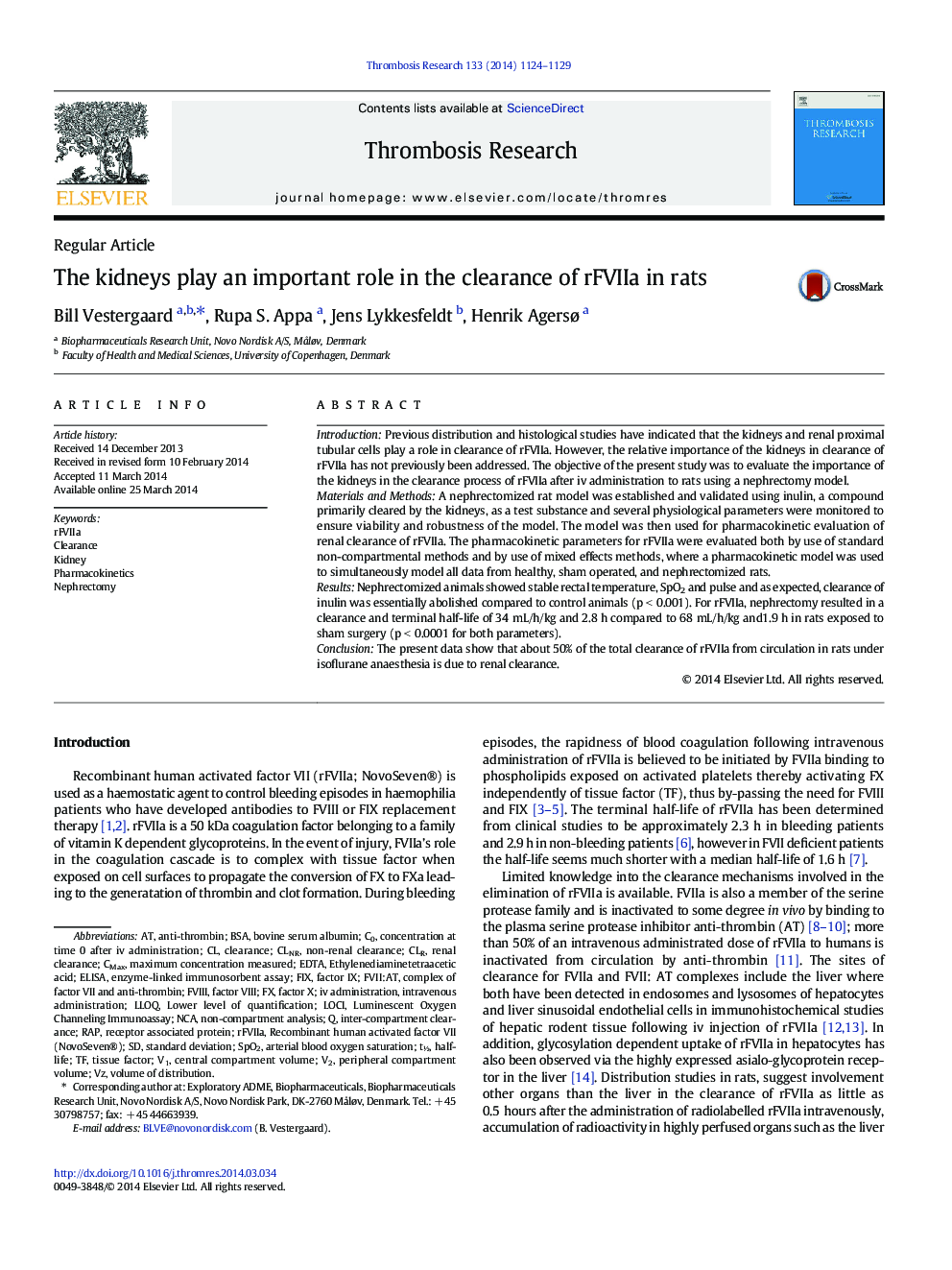| Article ID | Journal | Published Year | Pages | File Type |
|---|---|---|---|---|
| 6002512 | Thrombosis Research | 2014 | 6 Pages |
IntroductionPrevious distribution and histological studies have indicated that the kidneys and renal proximal tubular cells play a role in clearance of rFVIIa. However, the relative importance of the kidneys in clearance of rFVIIa has not previously been addressed. The objective of the present study was to evaluate the importance of the kidneys in the clearance process of rFVIIa after iv administration to rats using a nephrectomy model.Materials and MethodsA nephrectomized rat model was established and validated using inulin, a compound primarily cleared by the kidneys, as a test substance and several physiological parameters were monitored to ensure viability and robustness of the model. The model was then used for pharmacokinetic evaluation of renal clearance of rFVIIa. The pharmacokinetic parameters for rFVIIa were evaluated both by use of standard non-compartmental methods and by use of mixed effects methods, where a pharmacokinetic model was used to simultaneously model all data from healthy, sham operated, and nephrectomized rats.ResultsNephrectomized animals showed stable rectal temperature, SpO2 and pulse and as expected, clearance of inulin was essentially abolished compared to control animals (p < 0.001). For rFVIIa, nephrectomy resulted in a clearance and terminal half-life of 34 mL/h/kg and 2.8 h compared to 68 mL/h/kg and1.9 h in rats exposed to sham surgery (p < 0.0001 for both parameters).ConclusionThe present data show that about 50% of the total clearance of rFVIIa from circulation in rats under isoflurane anaesthesia is due to renal clearance.
